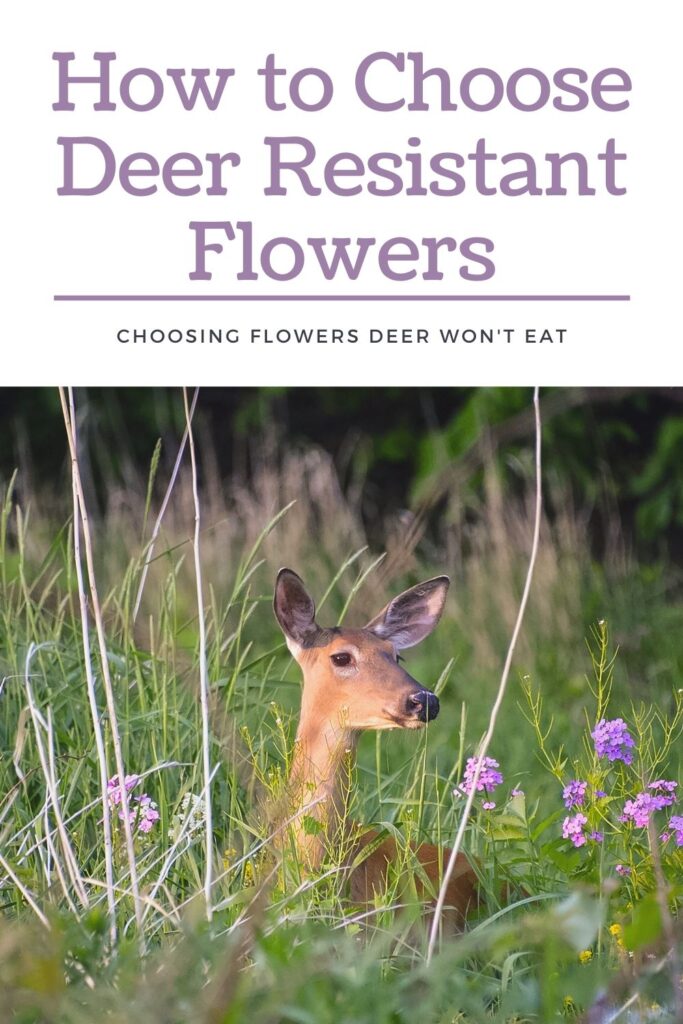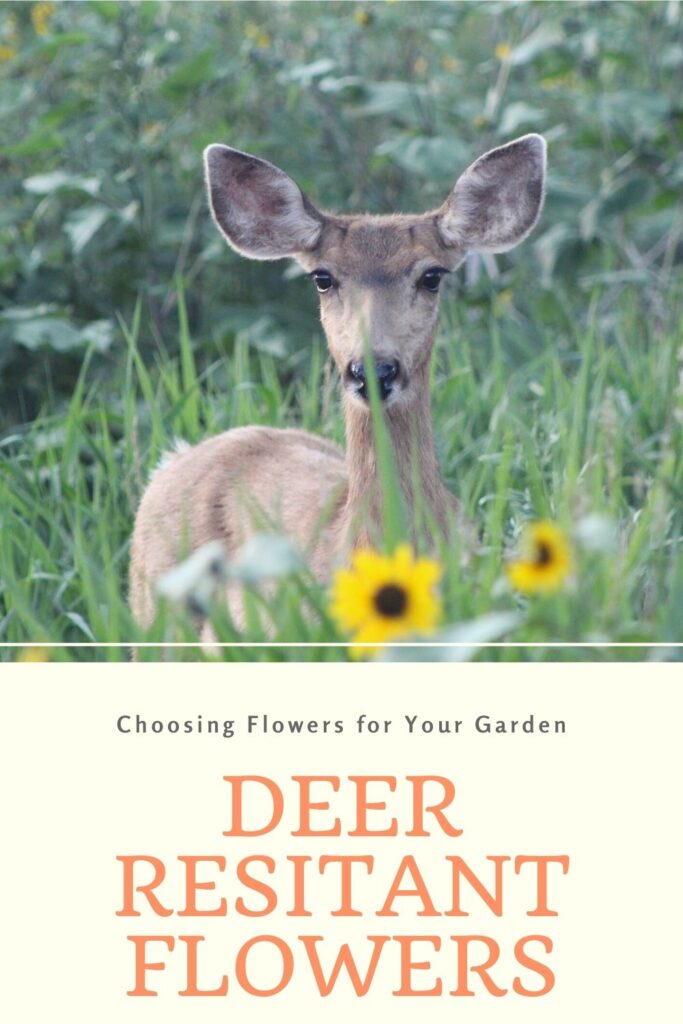Fill flower gardens with plants that deter deer from foraging. Improve deer resistance by learning how to choose deer resistant flowers with rough foliage and a strong scent.

Deer stay away from rough textured or bitter-tasting foliage and strongly scented plants. These are the types of plants that should be growing along border edges and among more appetizing deer-loving plants.
There is no such thing as deer-proof plants; a very tall fence is the only sure way to keep deer away from flower gardens. However, growing plants that are unsatisfying to deer by understanding the animal’s needs is a prettier and less expensive way to garden in a deer’s habitat.
Deer resistant flowers to add to your garden beds

Strongly Scented Flowers for Gardens
Flowering plants with a strong scent or fragrance will distract deer, making it more difficult for these animals to find desirable plants. Gardeners are able to create a scented garden or planting bed that attracts pollinators with these types of plants, as well. The butterfly bush, Buddleia, is an excellent example. Cleome, commonly called the spider plant, is an appropriate annual plant for this purpose.
Highly scented perennial herbs are another group of plants to consider. The perennial herb Salvia officinalis has variegated leaves that make colorful borders, but the annual salvias should be considered, as well. Agastache, commonly called anise hyssop, is a native perennial herb that attracts bees, butterflies, and hummingbirds, but not deer.
Rough Textured Leaves on Flowering Plants
Deer do not favor rough-textured leaves or flowers. Gardeners can find the scented characteristics and rough-textured leaves together in many flowering plants. Echinacea, Nepeta, Veronica, and Heuchera are rarely or seldom foraged by deer.
Bitter Tasting Flowering Plants
Deer do not like bitter-tasting plants that have milky sap. Plants such as butterfly weed and snapdragons are pretty flowers but are usually left alone by deer. Aconitum napllus, monkshood, and Lantana have poisonous parts but are frequented by pollinators that benefit gardens.
Monkshood is a native plant in Europe and a hardy perennial plant in the United States zones 4 – 8. The spike-shaped flower stems are covered in bluish flowers that bloom July through August. The plant grows three to four feet tall. However, it is not for drought-tolerant gardens.
More Deer Resistant Plant Ideas
Deer depend on plants for food. The effects on garden plants are determined by deer population sizes, the availability of preferred food sources, and drought conditions in the area. In the spring, plants are more susceptible because deer have increased eating and young shoots are appetizing.
Deer forage for food, even among pretty flower gardens. Check out more plants and whether deer favor them. Gardeners should choose plants that are rarely or seldom eaten for greater success growing a garden that deters deer from foraging.
You should also consider growing these perennial plants that repel mosquitoes, so you can enjoy your outdoor space more. You may also want to know these 5 Insects to Welcome to Your Garden.